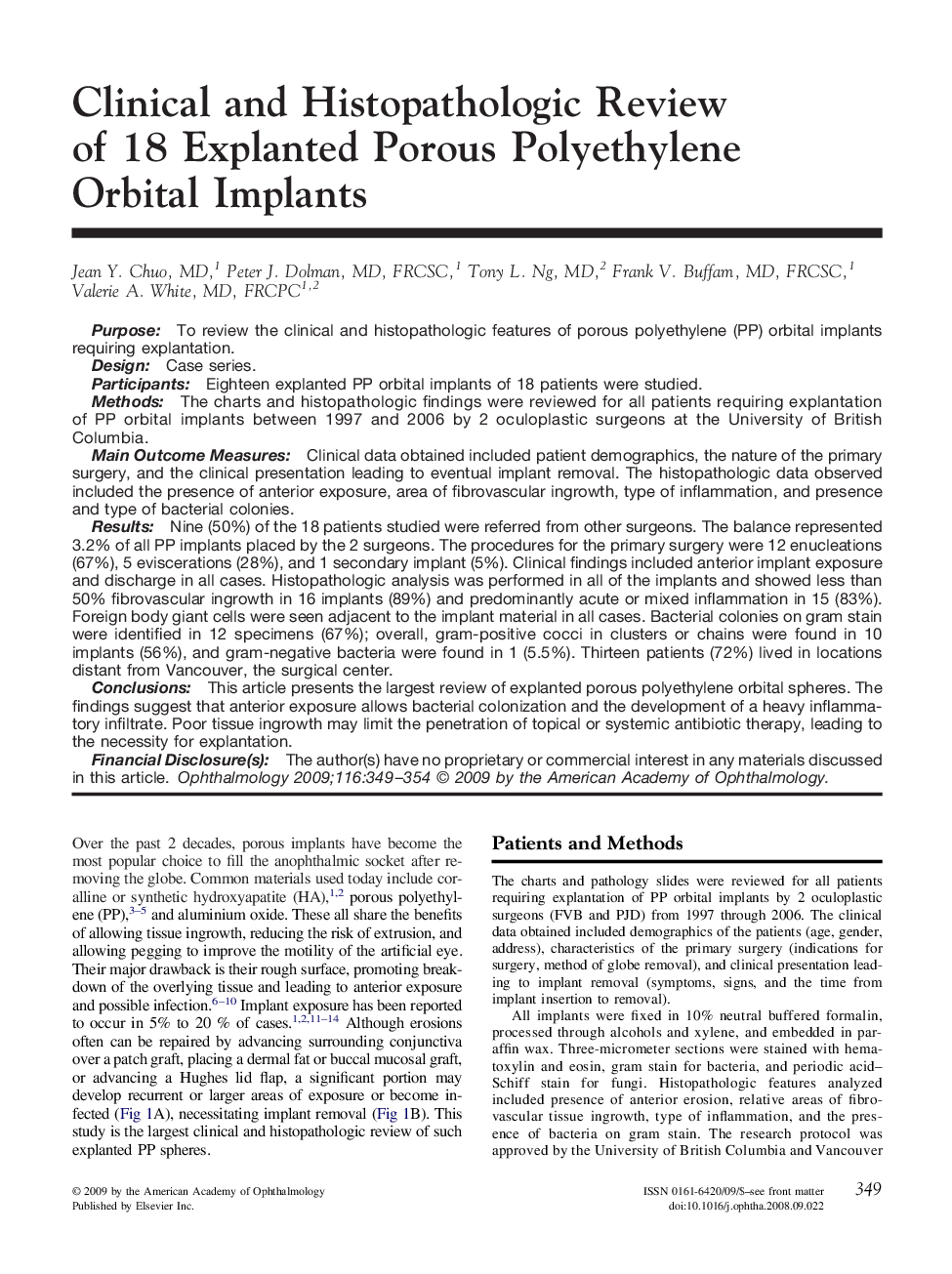| Article ID | Journal | Published Year | Pages | File Type |
|---|---|---|---|---|
| 4029268 | Ophthalmology | 2009 | 6 Pages |
PurposeTo review the clinical and histopathologic features of porous polyethylene (PP) orbital implants requiring explantation.DesignCase series.ParticipantsEighteen explanted PP orbital implants of 18 patients were studied.MethodsThe charts and histopathologic findings were reviewed for all patients requiring explantation of PP orbital implants between 1997 and 2006 by 2 oculoplastic surgeons at the University of British Columbia.Main Outcome MeasuresClinical data obtained included patient demographics, the nature of the primary surgery, and the clinical presentation leading to eventual implant removal. The histopathologic data observed included the presence of anterior exposure, area of fibrovascular ingrowth, type of inflammation, and presence and type of bacterial colonies.ResultsNine (50%) of the 18 patients studied were referred from other surgeons. The balance represented 3.2% of all PP implants placed by the 2 surgeons. The procedures for the primary surgery were 12 enucleations (67%), 5 eviscerations (28%), and 1 secondary implant (5%). Clinical findings included anterior implant exposure and discharge in all cases. Histopathologic analysis was performed in all of the implants and showed less than 50% fibrovascular ingrowth in 16 implants (89%) and predominantly acute or mixed inflammation in 15 (83%). Foreign body giant cells were seen adjacent to the implant material in all cases. Bacterial colonies on gram stain were identified in 12 specimens (67%); overall, gram-positive cocci in clusters or chains were found in 10 implants (56%), and gram-negative bacteria were found in 1 (5.5%). Thirteen patients (72%) lived in locations distant from Vancouver, the surgical center.ConclusionsThis article presents the largest review of explanted porous polyethylene orbital spheres. The findings suggest that anterior exposure allows bacterial colonization and the development of a heavy inflammatory infiltrate. Poor tissue ingrowth may limit the penetration of topical or systemic antibiotic therapy, leading to the necessity for explantation.Financial Disclosure(s)The author(s) have no proprietary or commercial interest in any materials discussed in this article.
